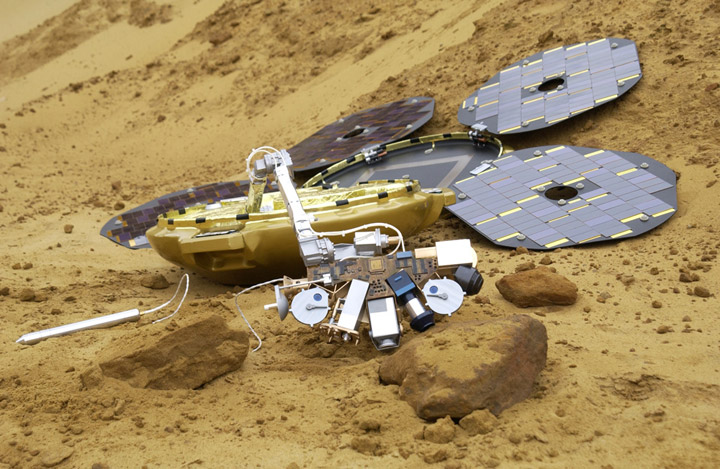TORONTO – It’s a quiet announcement that has made a lot of noise.

After the UK Space Agency scheduled a media briefing about its Beagle 2 Mars lander for Friday, the science community was abuzz with what it could mean.
Beagle 2 was launched aboard the European Space Agency’s Mars Express mission in June 2003. On Christmas Day 2003, the lander was successfully released from the spacecraft and British scientists waited anxiously for a signal advising them of its safe landing. But they never received a response. It was officially declared lost on Feb. 6, 2004.
Now, over 12 years later, a press conference that includes representatives from the University of Leicester (who was the project manager of Beagle 2), the European Space Agency and the UK Space Agency, has led to speculation that the small lander (it measured just 0.65 metres x 0.25 metres) may have been located.
Why now?
NASA currently has an extremely high-resolution camera aboard its Mars Reconnaissance Orbiter (MRO), called the High Resolution Imaging Science Experiment (HiRISE). This camera is able to take photos of the Martian surface with a resolution of about 0.3m/pixel, resolving objects less than a meter across. It has even imaged the tracks of the Curiosity and Opportunity rovers.
If anything could find a rover that small it would be HiRISE.
Though no one from NASA is on the scheduled media briefing release, the UK newspaper The Guardian reported this week that MRO scientists will be taking part.
The rover, named after Charles Darwin’s ship the HMS Beagle on which he wrote On the Origin of Species, was to search for life on Mars as well as analyze the atmosphere and climate and survey the planet’s surface from the landing site (Beagle 2 did not have wheels).
It’s unlikely that the spacecraft is still operating: Its lifespan was 180 Martian days, though NASA’s Opportunity rover had a lifespan of just 90 days and is still working now, 10 years later.



Comments